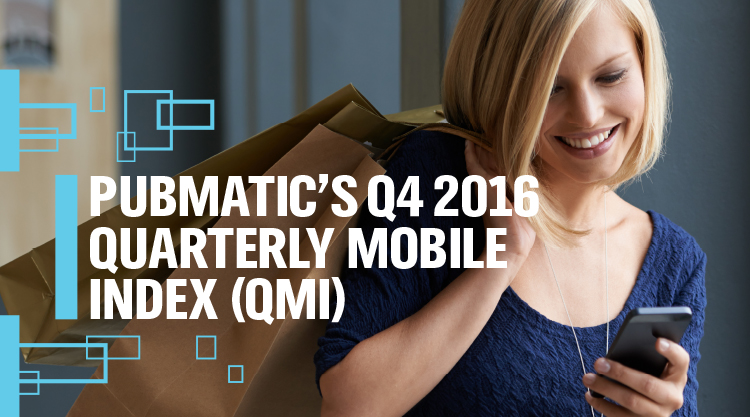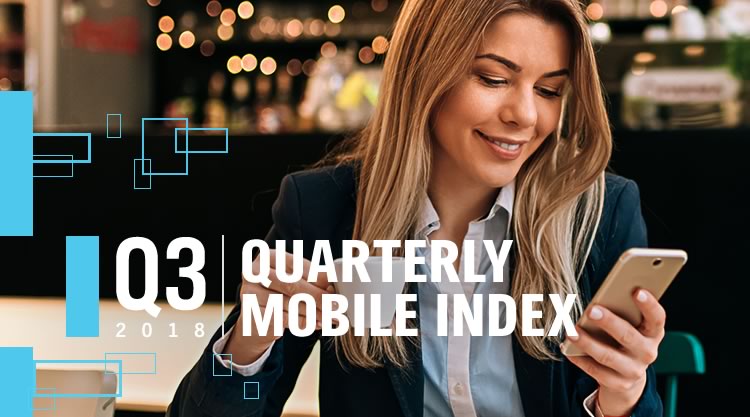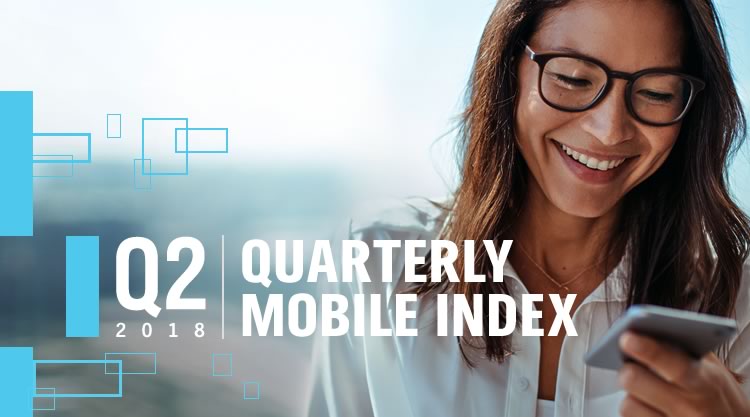Mobile App and Web Monetization Gap Closes for Premium Publishers
Each quarter, the PubMatic team analyzes terabytes of data behind the billions of impressions that flow through our platform in order to identify real-time developments in mobile advertising that can help publishers and advertisers alike unlock the power of programmatic for the mobile channel. Once again, tactics like header bidding and private marketplaces continue to drive significant growth in mobile monetization, as we’ll discuss below.
This quarter, we chose to expand our usual analysis to include a full-year look back for 2016 in addition to year-over-year trends for Q4 2016. The two most significant findings from our Q4 2016 QMI include: first, the growth of mobile header bidding and private marketplaces; and second, the shifting dynamics in monetization of mobile web vs. mobile app inventory.
The two most significant findings from our Q3 2016 QMI, released in November 2016, involved the growth of mobile header bidding and private marketplaces. Specifically, our analysis last quarter found that mobile private marketplace inventory is valued nearly 200% more than the mobile average, demonstrating the continued shift of brand dollars to programmatic as brands become more comfortable with this channel. In addition, the Q3 2016 QMI found that publishers around the globe were adopting header bidding strategies for their mobile web inventory as the result of the significant life it generated when all impressions are able to compete at the impression level.
In our most recent analysis, header bidding and private marketplaces (PMP) remain significant growth areas for mobile. In fact, we found that mobile monetized header bidding impressions grew 50X year-over-year in Q4—an increase of 4,800% in global mobile impressions monetized via header bidding technology in 2016. By the end of 2016, header-bidding-enabled mobile impressions accounted for three quarters (75%) of PubMatic’s total available impression pool—a number we expect to continue to grow throughout 2017, especially as we launch additional solutions for mobile header bidding at events like Mobile World Congress this year.
Similarly, mobile PMP impression volume grew more than 200% in Q4 2016, reaching a global all time high. Mobile web continued to drive PMP growth, accounting for 75% of mobile PMP impressions globally in 2016, while mobile PMP eCPMs nearly doubled over the same period. During the holiday shopping season, the automotive and technology verticals in particular saw rapid increase in mobile PMP eCPMs, increasing 24% and 108% year-over-year for that time period, respectively. Overall, mobile PMP impressions for each of these verticals grew 305% year-over-year.
Outside of header bidding and PMP, the Q4 2016 QMI also saw significant changes in the dynamics of mobile web vs. mobile app monetization. While some recently released data on mobile monetization asserts that mobile app publishers are disappointed with the CPMs they are receiving for their inventory, analysis of data from the premium publishers on our platform tells a different story: in 2016, eCPMs for mobile app inventory garnered a 59% premium over mobile web, while mobile app paid impression volume increased 21%.
Outside of major social networking apps that continually dominate consumer time spent in mobile, mobile web continued to provide the leading source of mobile monetization for premium publishers, representing 66% of mobile impression volume in 2016. Overall, however, our analysis found that the gap between mobile web and mobile app volume shrank from mobile web accounting for 77% of all mobile monetization in Q1 to just 60% in Q4, a trend we expect to continue over the course of 2017.
Download the full Q4 2016 QMI report by clicking here—and be sure to check back in a few months for our Q1 2017 Quarterly Mobile Index.





